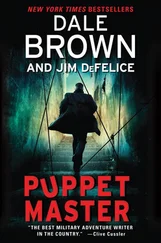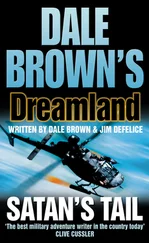Jason Richter was the commander of the Army Infantry Transformational Battlelab at Fort Polk, Louisiana, designing, building, and testing new devices for future Army infantry forces. He was in charge of developing and fielding a specialized weapon system he had designed years earlier called the Cybernetic Infantry Device, a creation that would eventually change the entire face of land warfare-if anyone could ever find money to fund it.
“I had a feeling it would be,” former U.S. Army Reserve captain Charlie Turlock said. Charlie-her real name, not a call sign or nickname-was slim and athletic, but the heat and humidity of the central Indian Ocean had drained a lot of her natural energy, as well as taken a lot of the bounce out of her short strawberry-blond hair.
“I hate getting dressed up for a party and having it canceled,” former U.S. Air Force major Wayne Macomber said. The former Air Force Academy football star and special operations commando always looked angry and on edge, as if he was expecting trouble to start any second. Patrick McLanahan’s private military contracting company, Scion Aviation International, had hired Macomber and Turlock to manage some very special assets for the company-several Cybernetic Infantry Devices and Tin Man commando units Patrick had absconded with from his former command, the Air Battle Force. Most of the CID units had been destroyed in the brief skirmish between Turkey, Iraq, and the United States two years earlier, and the rest had been returned to the U.S. Army and Jason Richter.
“Let’s get our stuff out of the Condor,” Charlie said.
“I’m not going out there until I get this poopie-suit off,” Whack said. He was referring to the full-body gray suit he wore. Nicknamed “Tin Man,” the suit was composed of a material called Ballistic Electro Reactive Process that kept it flexible until it was struck by any projectile or object, when it would instantly harden into composite armor that was impervious to even medium-caliber cannon fire. The Tin Man commando system also used an exoskeleton of microhydraulic actuators and limb braces that gave its wearer almost superhuman strength and abilities, and a helmet with several advanced sensors and communications equipment that made him a one-man infantry squad.
It took Whack several minutes to wriggle out of the Tin Man armor and put on athletic shorts, shirt, and shoes, and loop his ID card on a chain around his neck, and then he, Charlie, and Jason walked out to a nearby aircraft hangar. He was bathed in sweat during the short walk across the tarmac, even though it was almost dark, and then instantly chilled again in the air-conditioned and humidity-controlled hangar. “She’s a beauty,” Whack said after their IDs were checked by an Air Force Security Forces officer.
“Are you canceled, sir?” the officer asked.
“Yeah, Casone-my first flight on a B-2, and it’s nixed,” Whack said. “We’ll get to fly in it someday.” He was referring to the B-2A Spirit stealth bomber inside. The bat-winged composite long-range strategic bomber and its five sisters composed virtually all of America’s long-range air-breathing strike forces after the B-2’s lone base, Whiteman Air Force Base in Missouri, had been destroyed in a Russian nuclear sneak attack eight years earlier-four of the six survivors had been forward-deployed to Diego Garcia as part of an Asian bomber task force, and two had been airborne.
“She’s pretty, that’s for sure,” Charlie said. She touched the almost completely smooth dark gray skin. “Smooth, like a baby’s bottom.”
“Yeah, but flying in the Condor is just plain loco,” Jason said. They walked over to the open bomb bays. The left bomb bay had a rotary launcher with two RAQ-15 StealthHawk reconnaissance and strike cruise missiles, designed to loiter for several hours, transmit images and data back to the Spirit bomber, detect and analyze possible targets, then attack with small guided missiles if directed. The missiles were meant to neutralize any area defenses or patrol ships and make it easier to extract commandos on the ground.
The right bomb bay held something entirely different: an MQ-35 Condor air-launched commando insertion and extraction air vehicle. The Condor could carry up to four commandos and their gear. The commandos entered through the Spirit’s bomb bay, and the Condor was dropped like a bomb. The Condor could glide for up to two hundred miles and had a retractable landing gear for landing on a hard surface. If undamaged, the Condor had a small turbofan engine that allowed it to take off again and fly up to two hundred miles to safety.
“Almost as loco as flying in space stuffed in the back of those little spaceplanes,” Whack said, “but we’ve had the opportunity to do that, too.”
The three waited as a weapon-loading crew arrived and downloaded the Condor from the bomb bay. After it was placed on its storage cradle, Charlie opened a hatch on the left side, and the three dragged a large dark gray rectangular box resembling two refrigerators bolted together-but considerably lighter in weight-out and set it on the glossy polished hangar floor. “Hey, Carlo,” Charlie called out to the security officer. “You haven’t seen this thing in action yet, have you? C’mon over here.”
“I’m on duty, ma’am,” Sergeant Casone said. “I’ll watch from here.”
“Rog.” Charlie turned to the box and spoke, “CID One, deploy.”
At that, the box began to move. Sections of it shifted and popped out, quickly replaced by other moving pieces, until the box became a ten-foot-tall two-legged robot.
“Awesome,” Casone exclaimed.
“This is the best part,” Charlie said. “CID One, pilot up.”
The robot squatted down, its left leg and both arms extended backward, and a hatch popped open on its back. Charlie used the outstretched leg as a ramp and the arms as handrails to climb up and wriggle inside the robot. The interior surface was composed of a soft electroconducting material that completely surrounded her entire body, cushioning her from shock and picking up neural impulses in her body for transmission to the robot’s haptic control computers. Her head fit into a helmetlike device with a breathing mask, communications gear, and an electronic wide-angle multi-function visor.
Moments after the hatch closed, the robot stood up-and it moved as lithely and naturally as a human. “All systems in the green,” Charlie spoke, although her voice was heard as a male electronically synthesized growl. She ran around the B-2 bomber to Casone, curtsied before him, and extended a massive armored hand, its fingers moving as realistically as her own. “Nice to make your acquaintance, Sergeant Casone.”
“All right, Charlie, stop screwing around,” Whack said. “Put the CID away and-”
Jason’s secure cellular phone rang, and he answered it immediately. “Richter here…who?…General McLanahan…you mean, General Patrick McLanahan? Excuse me, sir, but how did you get this number?” The name got everyone’s attention instantly. Jason looked at Whack, then said, “Stand by, sir.” He held out the phone to him. “It’s Patrick McLanahan. He wants to talk with you.”
Whack smiled ruefully and shook his head. “I should have known he’d be involved with this,” he said, reaching for the phone. “If it has to do with the Tin Men, the CIDs, or big bombers, McLanahan’s got to be behind it, civilian or no.” He took the phone. “Hello, General. Fancy talking to you.”
“Hello, Whack,” Patrick said. “Listen up. We lost a B-1 bomber over the Gulf of Aden. Gia’s plane.”
The smile was instantly replaced with a scowl. “Where and when?” he asked.
“About ten minutes ago, approximately four hundred miles southwest of Salalah, Oman. The Reagan carrier group is en route; fixed-wing searchers should be on scene within the hour.”
Читать дальше












